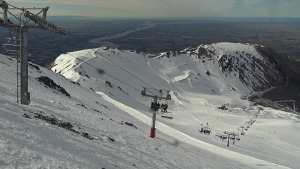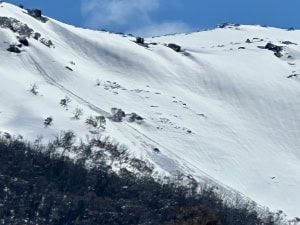WINTER 2012 Getting into the Backcountry
![]()

Damon Hayler and Alex ‘Chumpy’ Pullin reaping the rewards of a backcountry mission. Photo Jake McBride.
Winter 2012 | Alex Cameron
The backcountry Down Under is an untapped resource for many snow enthusiasts. Mark our words; it is going to be the place to be in the coming years. There are so many advantages to getting out of the resort. Firstly, the untouched landscape is so striking; everywhere you look you see potential National Geographic photographs. Secondly, every turn feels like heaven as you waft through untracked snow. And thirdly, you are sharing the incredible experience with only your friends.
To date, it has been very difficult to spend time in the backcountry in Australia and New Zealand. In Australia you cannot use snowmobiles in the mountains, which are the ideal form of backcountry transport. In New Zealand, you can use snowmobiles and helicopters, but only if you’re willing to cough up an arm and a leg. So riders have been forced to hike through snow. However recent developments in backcountry access are starting to change all that.
For snowboarders, split-board technology is revolutionising backcountry accessibility. A split-board is a snowboard that quickly and easily transforms into a set of cross-country skis. It makes moving around in the snow considerably easier. A handful of snowboard manufacturers are bringing split-boards into the country for winter 2012 and beyond. For you, this opens up vast swaths of new terrain.
For skiers, the skins and binding adapter kits needed to transform regular skis into touring skis is becoming cheaper and easier to use with each passing season.
However, the reality is that if you plan on getting some proper skiing done in the backcountry, you need to be prepared to spend a couple of days out there at a time. It is an incredible experience; sleeping under the stars, on the snow, completely isolated in the wilderness. But if you’re not properly prepared it is dangerous. Once the sun sets, the temperature drops rapidly. If you think it is cold at night in the villages around the resorts, imagine how cold it must be up there on the mountains. The best way to prepare for a backcountry mission is to track down a snow-camping store, as they will be able to give you all the information you need. Ultimately, speaking to someone with experience is the best way to gain the necessary understanding.
Bruce Easton is the owner and manager of Wilderness Sports, an adventure, outdoor and backcountry store in Jindabyne. He has over 20 years experience guiding in the Australian backcountry. He knows the environment better than most, and has these three tips for a first-timer heading out of the resort;
- Get some experience hiking out of winter to get familiar with the mountains, weather and terrain.
- Learn to read a map and use a compass; do not rely on technology to get you there and back as Smartphones and GPS devices are no substitute for mountain sense.
- Hire some gear and start with day trips to build your skills and experience so you know what does and does not work in the backcountry rather than accept what the web or brochures or advertising say.

The backcountry awaits you and your friends. Photo Cole Barash.




